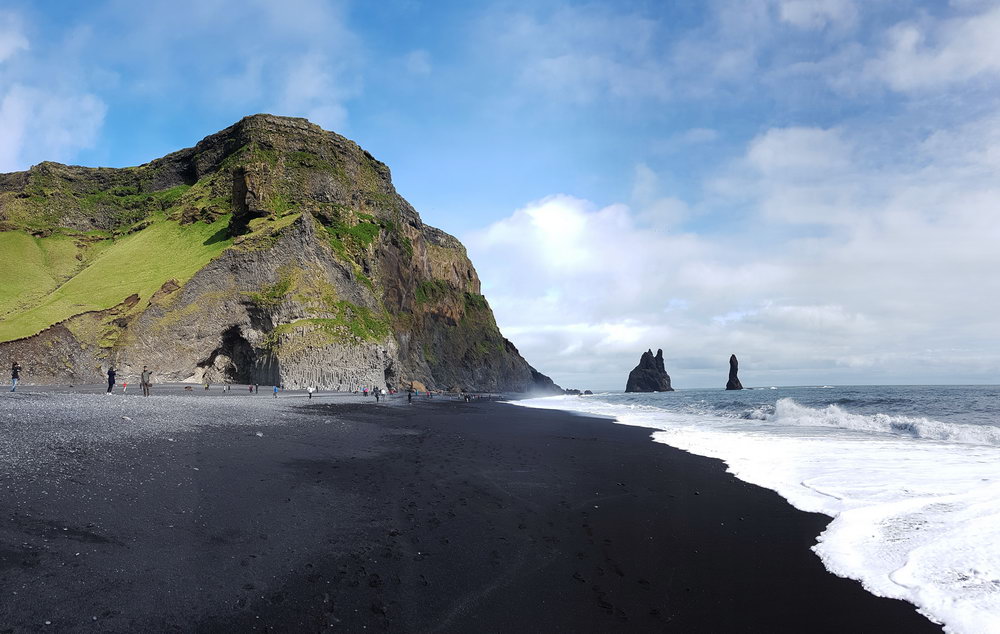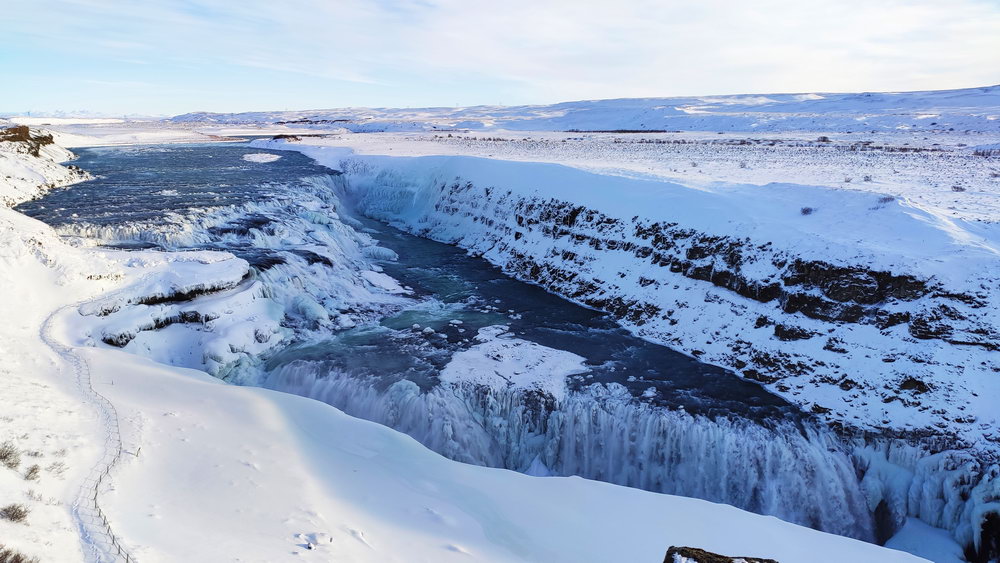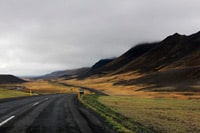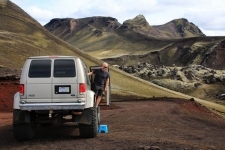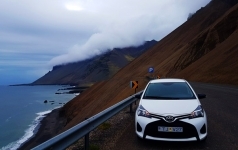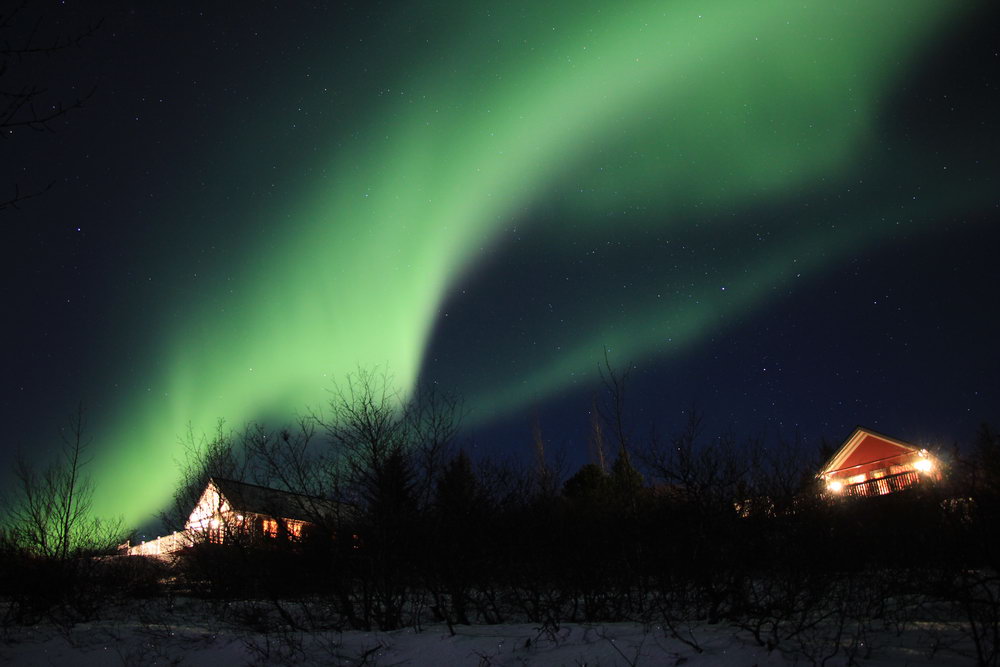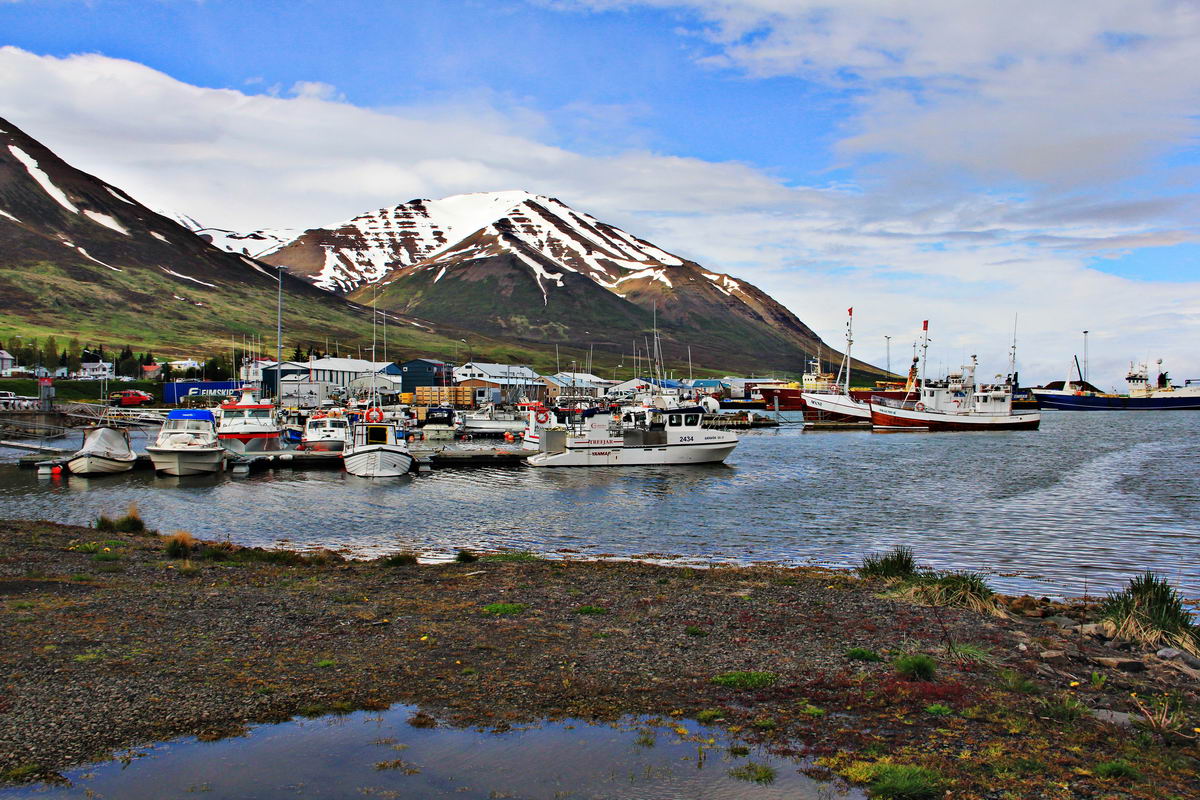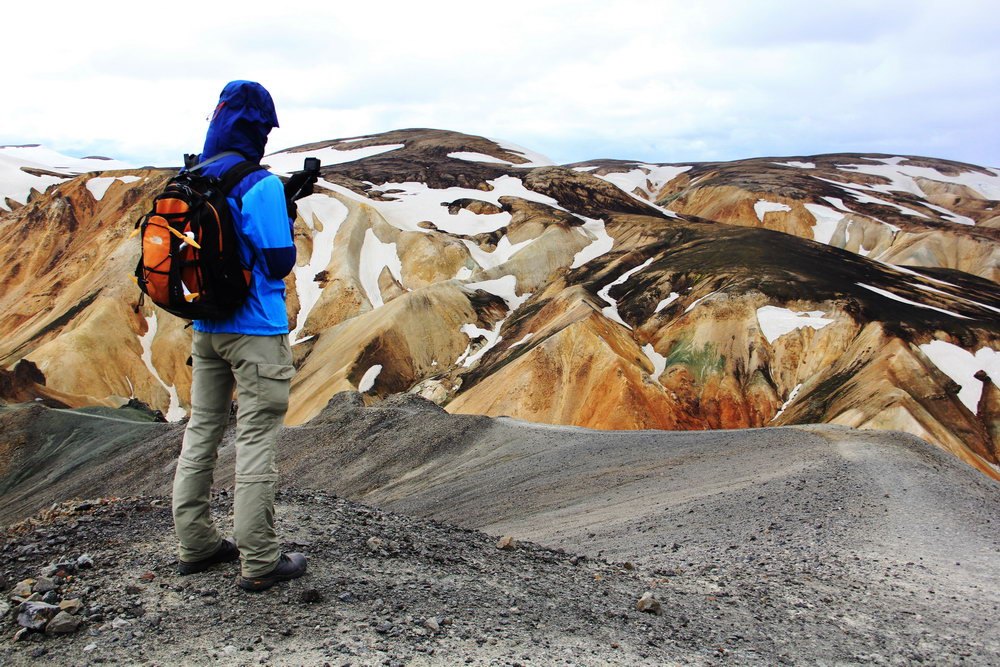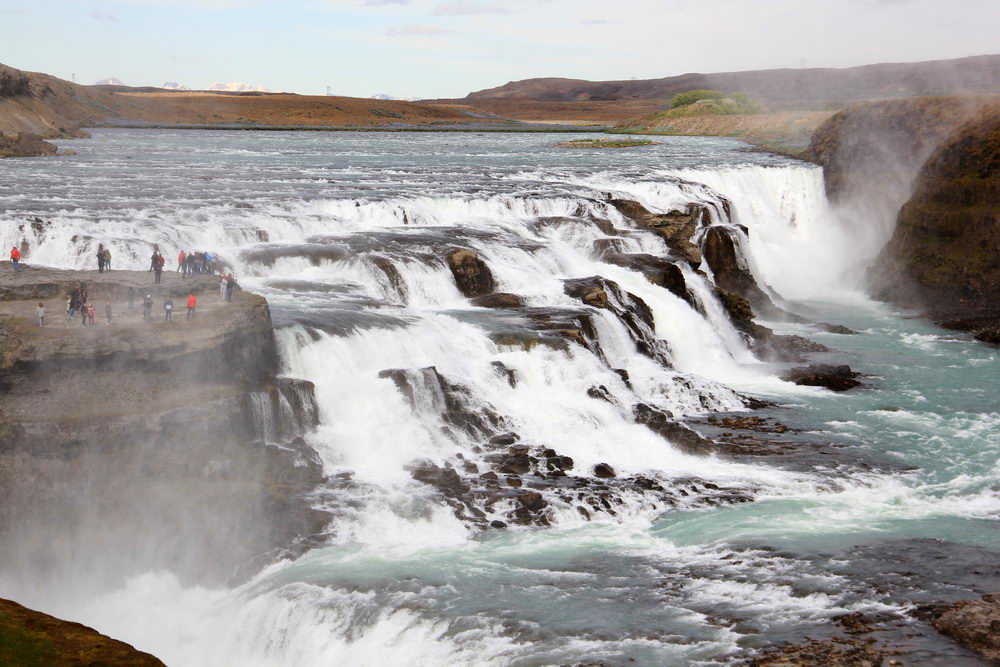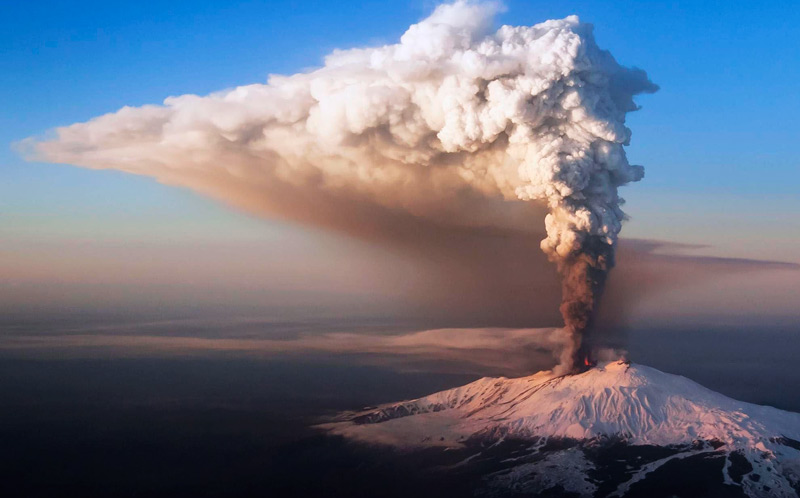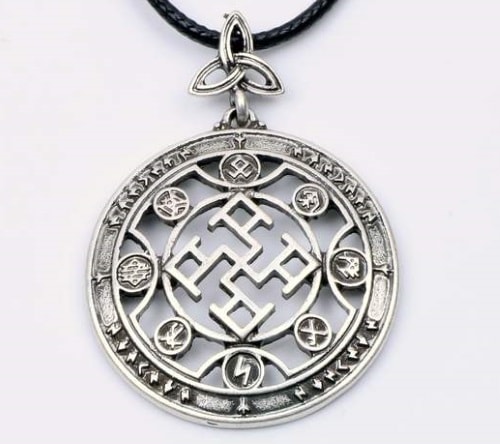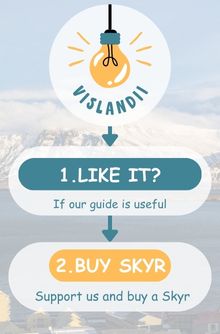Traveling to Iceland on your own is not that difficult! Many companies are ready to prepare a trip plan for you, put you on a bus with 20 more of the same kind and travel stopping where planned ... But it's much better to be able to choose what you want, see those sights of Iceland that are interesting for you!
So, you have decided to visit Iceland on your own, now you need to make a plan for an independent trip to Iceland!
- When to go to Iceland?
- Where to stay in Iceland?
- What to take on a trip to Iceland?
- Useful links when planning an independent trip to Iceland
When to go to Iceland?
When is it better to go to Iceland - the first answer that suggests itself is in the summer, when the weather is warmer and more stable, and there is a little less rainfall. But... There are quite a few but...
Why are you going to Iceland? It is quite possible that you want to see the northern lights and then summer is the most inopportune season because there are almost no dark nights. And if you want to go to the mountains, then this is only possible in summer, because in winter the roads are simply closed and you will have to start on foot almost from Reykjavik.
An independent trip is good because you can choose a place and time yourself and not adapt to other travellers.
If you have already decided what you want to see, then we have written a detailed article on what to consider when choosing the time for an independent trip to Iceland:
Weather in Iceland. Best season for traveling in Iceland
When to go to Iceland, when it is warm here, when is the best season? These questions bother everyone who is going to go to Iceland. In summer it is warm and there is ...
How to travel - car, public transport, on foot?
For me, when planning a trip to Iceland, this was the most difficult question. In the final decision, I would advise you to be guided by several things:
- time
- places of interest to visit
- participants
- budget
Time - if you have an unlimited time, then this question is not worth it. You can always drive a car, then go hiking, or maybe even just fly to the other end of the island. But most often you only have a vacation, and maybe even a few days. If you only have 1 or 2 days, then a good solution would be to rent a car or just buy a tour and visit the golden ring of Iceland.
About what tours you can find, how and where to look for them and what you generally need to know about them, read here:
Iceland tours, overview of options and cost
Iceland is one of the most popular destinations for nature lovers, Iceland has become so popular recently and is now experiencing a tourist boom. Over 2 million people...
If you have a week, or even two weeks, then you should think about it. One of the great routes to get to know Iceland for the first time is to take the ring road - first highway around Iceland. This trip can fit in 1 week, but it's better to leave a little more time. We drove along the ring road in 9 days, and we could add a couple more days. Next time with 12 days was amazing!
If you decide to drive on the first highway, then you will not need a four-wheel drive car. But if you go to some places of interest that have an F (mountain road) marker, then you will definitely need a four-wheel drive car. One of these attractions are the rainbow mountains Landmannalaugar.
If you are traveling by car, then you can always stop at beautiful places, take photos or just relax. About how to rent a car in Iceland and what you should pay attention to
Car rental in Iceland - tips and tricks
Rent a car in Iceland - how to choose proper car, what is the cost of renting a car, is it worth taking full insurance, where you can drive a car, and where you have t...
If your group does not have a driver, but at the same time you want to drive around the island, then you can always join one of the multi-day tours or use the option with the so-called "passports". A "passport" is essentially a travel ticket for buses of a certain company and provides the opportunity to travel on buses according to the plan. For example, there are travel cards that allow you to drive along the ring road with an infinite number of stops, but only in one direction, and the ticket itself is valid for 2 weeks or even a month. Pretty good alternative to renting a car, but not cheap. If you are 2-4 people, then renting a car will be more profitable and you won’t have to constantly check the schedule.
However, before you make a choice in the direction of the "Passport" look at what "passports" are currently offered, as for now there have been fewer options and shorter routes.
If you decide that all these trips are not for you and you want to be alone with the wild Icelandic nature, then a great choice would be to go hiking in the Highlands. Highland in Iceland is called the territory that is located in the center of the island and exceeds a height of 1000 meters. There are many marked routes, thousands of people go on them every year. The only negative is that there are no good topographic maps of Iceland freely available on the Internet. BUT they can always be purchased online or at a bookstore.
The Icelanders thought that many people want to travel on their own in the mountains and it would be nice to deliver them comfortably to the starting point of trekking and then pick them up from trekking and take them to some major city. And here they are, there are several bus routes that pass through the Highlands at the start / end of trekking routes make stops and leave or pick up tourists.
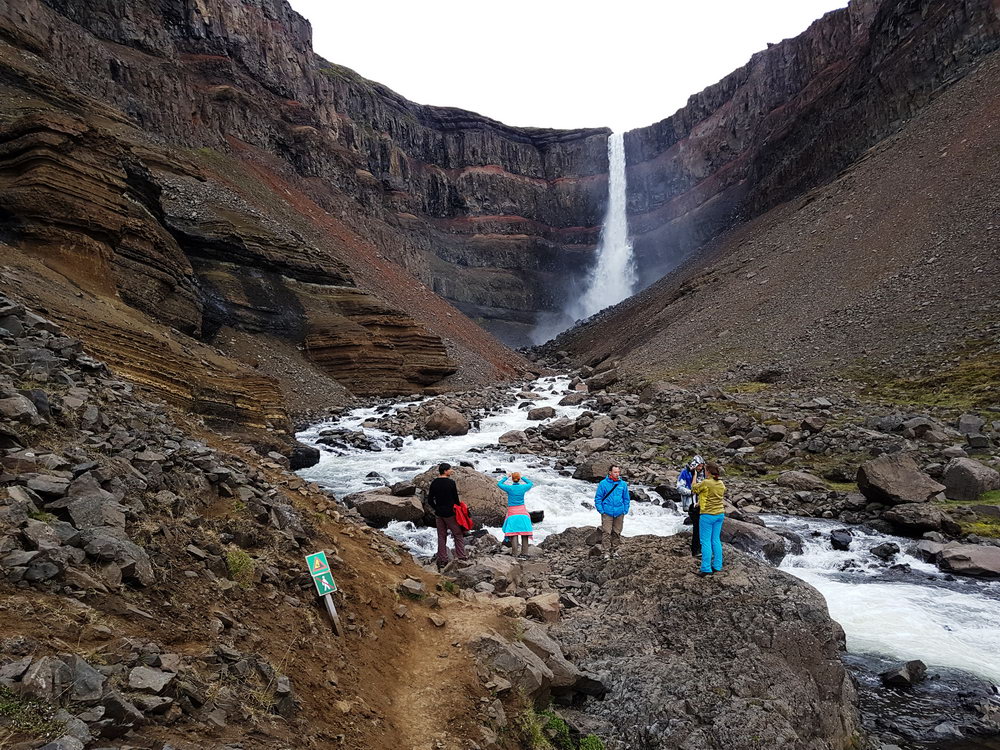
Where to stay in Iceland?
When choosing where to stay while traveling in Iceland, it's worth looking at your budget. After all, even seemingly inexpensive hostels in Iceland turn out to be expensive. And houses with rooms for 4-6 people in the area of the attractions will cost you a lot. For example, in the campsite on Lake Myvatn, there is an opportunity to stay not only in a tent, but also in a comfortable house with rooms for 4 people. A room for 4 people in the summer cost us $ 160, that is $ 40 per person for a room with beds, we had sleeping bags and this saved us $ 10 per person, that you need to pay additionally if you wanna use bed linen.
Do not forget that if you are traveling through the wild places of the Highlands, then you can put up a tent almost everywhere, most importantly, do not forget to leave nothing behind and take all the garbage with you.
What to take on a trip to Iceland?
What to take with you very much depends on the style of travel, but there are still some general details.
Iceland is not a cheap country, and if you plan to eat only in cafes and restaurants, then you will need to prepare a very tidy sum. Or take care of the issue of nutrition a little in advance, for example, bring or buy in a supermarket in one of the cities, something for breakfast, snacks for lunch, and maybe even dinner. For example, in every supermarket in Iceland they sell disposable grills (they are usually enough for 1-1.5 kg of meat) and, most importantly, marinated lamb! It's not very expensive and it's very, very tasty. Of course, it's worth going to the cafe a couple of times, at least to try the lobster soup :)
And in Iceland, the weather is constantly changing and strong winds are blowing, so no matter how you decide to travel, you should definitely take a windproof and waterproof jacket with you.
For the same reason of frequent rains, it is worth taking care of suitable waterproof shoes, in which it will be convenient to move around the stones. After all, even if you arrived by car to the sights, it may turn out that another 1-2 km you have to walk through a rather wild space. Although the paths are trampled down by tourists, it is better to have sneakers / boots, and not heeled shoes.
And if you decide to live in a campsite or you are planning a wild hike in the Highlands, then of course you have already thought that it is worth taking a tent, sleeping bag, sleeping pad. Summer temperatures in Iceland are not very high, so it is better to expect that it can be around 5-10 degrees at night and take a sleeping bag with an appropriate comfort temperature. And even if you decide to stay in hotels and lodges, you can find places where you will sleep under the roof and on the bed, but in a sleeping bag.
Another very useful thing when traveling in Iceland is a thermos! After all, hot tea or coffee from a thermos that will warm you in the cold Icelandic wind are the best.
Useful links when planning an independent trip to Iceland
We have collected many of the sights of Iceland on the Map of attractions of Iceland
Information about when mountain roads open can be found on the official website www.road.is. Also on this site there is information about the current state of the roads, which is very useful if you are traveling in Iceland in winter. After all, sometimes even the main highways are closed due to heavy snowfalls.
If you want to use the services of local guides or car rental companies, then the best travel services aggregator in Iceland is guidetoiceland.is.
Interested in seeing seals in Iceland? This guide covers the best locations, excursions, and wildlife photography opportunities to help you spot these fascinating creatures and other native wildlife in Iceland’s pristine landscapes.
Read more: Seals in Iceland: Where to Spot Them and Best Wildlife Photography Tours
Curious about what animals you can spot in Iceland? While penguins and polar bears aren't native to the island, Iceland is home to a diverse range of fascinating wildlife, including seals, whales, puffins, and more.
Read more: Can You See Penguins or Polar Bears in Iceland? Exploring Iceland’s Wildlife
Heading to Iceland? Whether you're camping, road-tripping, or exploring the city, here's your ultimate packing list to ensure you're ready for any season and adventure.
Read more: Essential Iceland Packing List for Every Season and Type of Travel
Planning a trip to Iceland? Here’s everything you need to know about plug types, voltage, and how to charge your devices while you’re there.
Read more: Iceland Plugs and Electrical Guide: What You Need to Know
Wondering if you can use US dollars or Euros in Iceland? This guide covers everything you need to know about the currency in Iceland, exchange options, and the best way to pay during your visit.
Read more: Currency in Iceland - All you need to know before travel
April is an amazing month to visit Iceland. This is the time when the weather starts to change more intensively! This means the first signs of spring, the first flowers, and Iceland celebrates the first day of summer in April! Or rather, the Icelandic national first day of summer is celebrated on the first Thursday after April 18th. Where else can you start summer in April?!
A list of equipment for a trip to Iceland. What to take with you in summer or winter.
For those who are traveling to Iceland for the first time - read to know what is useful and what is not. After all, the weather in Iceland is very unstable even in summer. In order not to get wet in the cold rain and wind, read what clothes are best to take with you to Iceland.
Read more: What to take with you to Iceland (equipment and clothes)
When we were going to Iceland for the first time, we really missed such an article. Here you can find all the useful information on how to organize a budget trip to Iceland on your own.
Iceland is located at the junction of two lithospheric plates: the Eurasian and North American. Therefore, Iceland is a place with one of the highest levels of volcanic activity in the world. Iceland has more than a hundred volcanoes, and 25 of them have been active over the past thousand years. The most famous Icelandic volcanoes are Eyjafjallajekull and Hekla.
Read more: Volcanoes of Iceland - the list of the most dangerous

